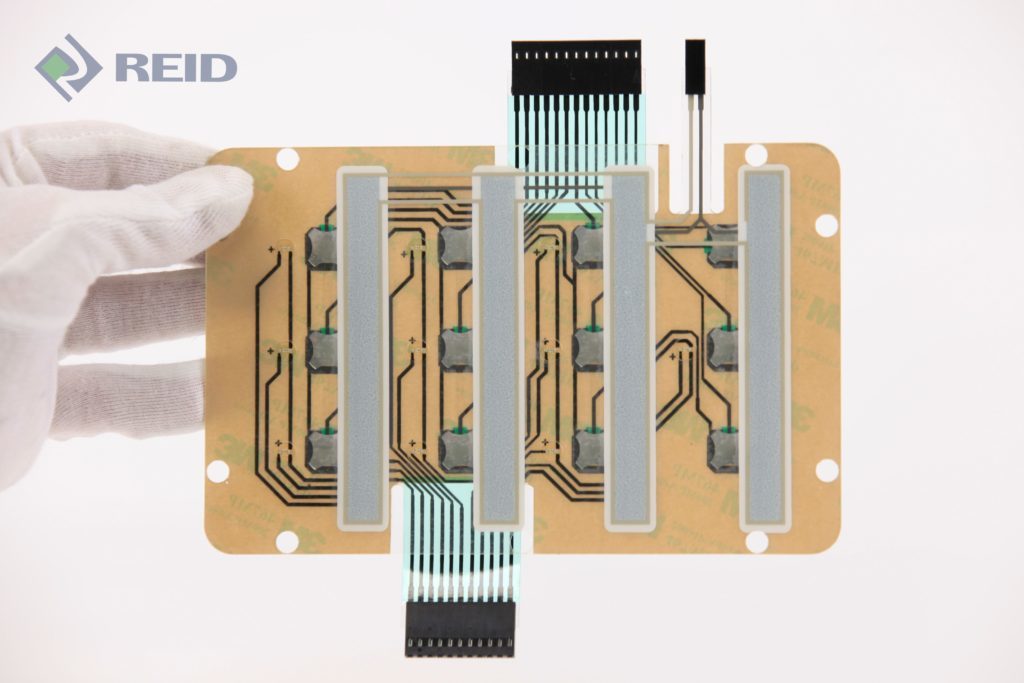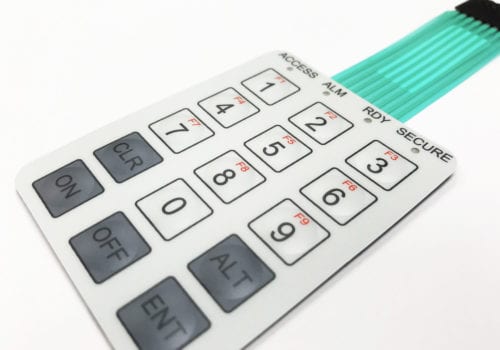The Advantages of Using Membrane Switches in Consumer Electronics
Membrane buttons are progressively recognized for their considerable benefits in consumer electronic devices, especially in improving individual interaction and simplifying production procedures. Their capacity to supply intuitive user interfaces and tactile feedback can greatly lower user mistakes, while their lightweight construction and simplified production steps contribute to cost-effectiveness and quicker market access. The flexibility in layout allows for tailored services that fulfill diverse customer needs. Yet, the ramifications of these benefits expand past simple capability, meaning a transformative possibility for the future of digital devices. What further benefits might become this modern technology evolves?
Improved Individual Experience
In today's affordable landscape of customer electronics, improved individual experience is vital; virtually 85% of customers focus on intuitive interfaces. Membrane switches play an important duty in attaining this degree of use. Their level, low-profile style enables for seamless integration into various devices, decreasing bulk while keeping capability. This layout visual not just improves the visual allure however likewise contributes to a more streamlined user interaction.
The tactile responses given by membrane switches is necessary for guiding user activities, making sure that commands are registered precisely. This responses system lessens errors and enhances user contentment, fostering a positive connection between the customer and the tool. Furthermore, the personalized nature of membrane changes allows makers to tailor interfaces to details individual needs, making gadgets more easily accessible and inviting.
In addition, membrane switches can include backlighting and visuals overlays, even more improving presence and functionality in diverse atmospheres. This adaptability makes certain that gadgets continue to be functional and easy to use, regardless of the setting. In general, the combination of membrane layer changes into consumer electronics substantially enhances customer experience, driving brand name commitment and complete satisfaction in a progressively affordable market.
Cost-Effective Manufacturing
Consumer electronics suppliers are continuously looking for means to stabilize top quality with affordability, and membrane switches supply an engaging remedy for cost-effective manufacturing. membrane switch. These components are inherently simpler than conventional mechanical buttons, which decreases both production prices and complexity. The light-weight design of membrane changes allows for lower delivery costs and much easier assimilation right into portable gadgets, additionally improving their appeal in an affordable market

Makers can create membrane buttons in high volumes, making the most of economic situations of scale. This mass manufacturing ability guarantees regular high quality while dramatically reducing per-unit costs. In addition, the materials utilized in membrane layer buttons, such as polyester and polycarbonate, are typically less expensive than those required for standard switch technologies, adding to total price savings.
The production process for membrane layer switches over normally requires less actions and less labor contrasted to various other switch kinds. This structured technique not just reduces labor prices but also increases time-to-market, enabling firms to respond quickly to customer demand. As a result, the mix of decreased product expenditures and efficient production procedures positions membrane switches as a wise investment for suppliers intending to provide top notch consumer electronics at competitive price points.
Layout Adaptability and Customization
While traditional mechanical switches usually enforce constraints Check Out Your URL on layout as a result of their bulk and needed installing systems, membrane layer buttons give exceptional versatility and personalization choices for consumer electronics. This ingenious innovation enables developers to create sleek, low-profile user interfaces that can seamlessly incorporate right into various item aesthetic appeals, from mobile phones to kitchen area appliances.
Membrane layer buttons can be generated in virtually any shape or dimension, more information making it possible for suppliers to tailor the layout to specific ergonomic and useful needs. This versatility not just improves user experience yet additionally allows for artistic layouts that line up with brand identity. Furthermore, the usage of published graphics on membrane switches offers the opportunity for intricate designs and lively colors, which can be conveniently customized without considerable cost effects.
Furthermore, membrane layer buttons can integrate multiple performances right browse around these guys into a solitary layer, reducing the demand for several elements and streamlining assembly procedures. This streamlined design approach decreases area and weight, making it perfect for compact customer electronic devices. Overall, the style versatility and customization capabilities of membrane switches equip suppliers to introduce, ultimately causing even more easy to use and interesting products.
Durability and Dependability
As innovation remains to develop, the toughness and integrity of membrane switches have actually come to be crucial considerations for makers in the consumer electronic devices sector. Membrane layer switches are created to withstand harsh environmental problems, consisting of temperature variations, dampness, and dirt exposure. Their robust building usually involves multi-layered products that give an effective barrier against impurities, ensuring longevity and constant performance.
In addition to environmental resistance, membrane switches over deal premium mechanical integrity. Unlike conventional mechanical buttons, which might use out gradually, membrane layer switches utilize a sealed design that decreases the threat of mechanical failure. The absence of relocating components not just improves their life-span yet additionally decreases wear and tear, making them ideal for high-usage applications.
Moreover, membrane switches can endure a significant number of actuations without loss of performance, frequently exceeding numerous cycles (membrane switch). This toughness translates to lower substitute costs and lowered downtime for makers and consumers alike. Overall, the mix of environmental durability and mechanical dependability makes membrane layer changes a strategic option for customer electronic devices, guaranteeing that devices remain efficient and operational throughout their designated lifespan

Streamlined Item Advancement
The toughness and reliability of membrane layer changes substantially contribute to streamlined item growth in the consumer electronics field. By incorporating these buttons early in the layout procedure, manufacturers can minimize the intricacy and number of parts needed in their products. Membrane layer buttons are lightweight and small, enabling extra effective space use within tools, which can result in simplified assembly procedures.

The convenience of producing membrane switches also plays a vital role in item advancement. With modern printing strategies and products, production can be scaled successfully, lessening lead times and lowering waste. This leads to lower production prices, boosting general productivity.

Final Thought
In conclusion, membrane changes significantly improve consumer electronics by supplying an enhanced customer experience, economical production processes, and functional design options. The combination of membrane layer changes stands for a strategic option for manufacturers looking for to maximize product style and efficiency.
Membrane layer buttons are increasingly acknowledged for their considerable benefits in customer electronics, especially in boosting customer communication and improving manufacturing procedures. In addition, the products utilized in membrane layer buttons, such as polyester and polycarbonate, are frequently less pricey than those needed for standard button innovations, contributing to general expense savings.
The manufacturing process for membrane changes normally calls for less steps and less labor contrasted to various other switch types. Unlike conventional mechanical switches, which may use out over time, membrane layer switches over make use of a closed style that lessens the threat of mechanical failing.In verdict, membrane layer changes substantially improve consumer electronics by offering an improved user experience, cost-efficient production processes, and flexible style options.